It's weeds, tree leaves, flowers, and vines! It's a wild summer salad - vegan-style! Do you know any of these plants? You could be eating them in a wild, wild salad! Here's how I did it!
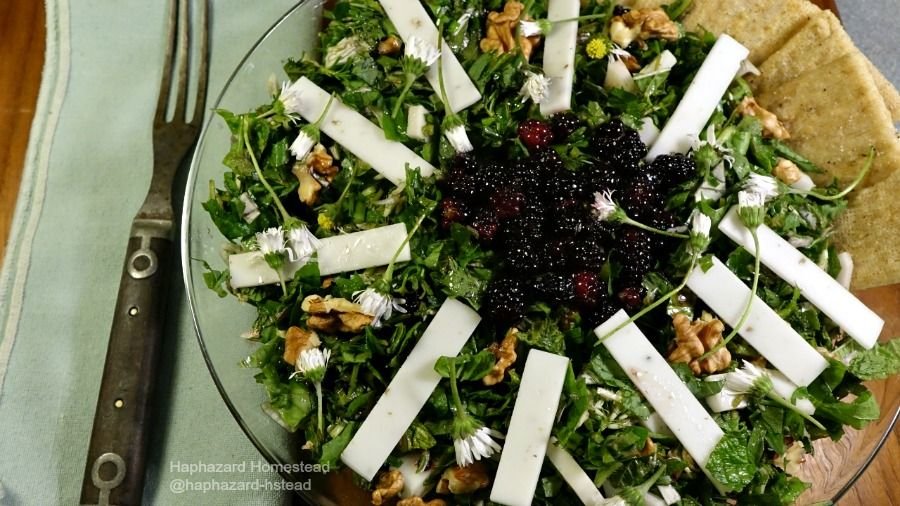
Thanks to the Steemit Culinary Challenge for prompting me to make this salad! There are special challenges in foraging a salad in the late spring. Many wild spring salad greens have gotten tough, or bitter, or both, due to bright sunshine and moisture stress, or just from growing older. And the summer weeds haven't appeared yet here at Haphazard Homestead. So what plants will end up in my salad?
Step 1. Forage the greens
My salad greens all came from my yard. I just took a walk. I took all the photos first, because that takes a lot longer than actually picking everything. Here are two collages with the plants I picked, except for one that I show later. Under each collage, I name the plants. I also give their scientific names in a plant list near the end of this post, because common names vary from place to place.
Some of these plants grow in many parts of the world - as weeds, trees, or garden escape artists. Do you recognize any of these plants? Which ones do you have growing around you?
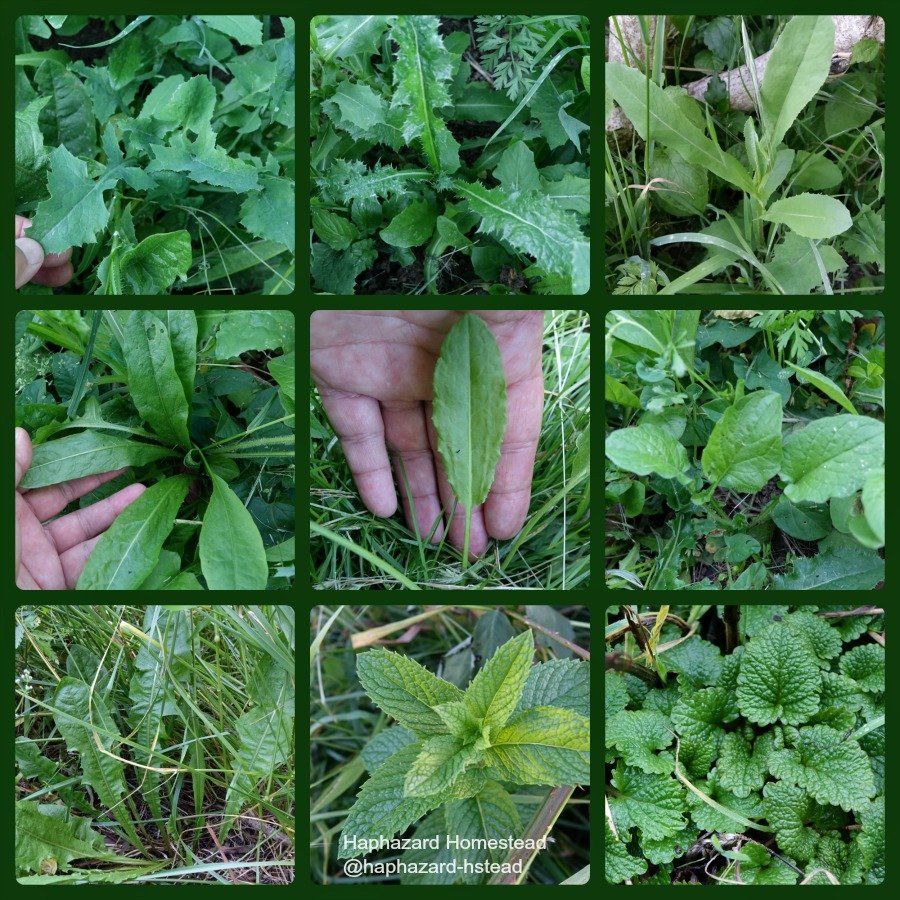
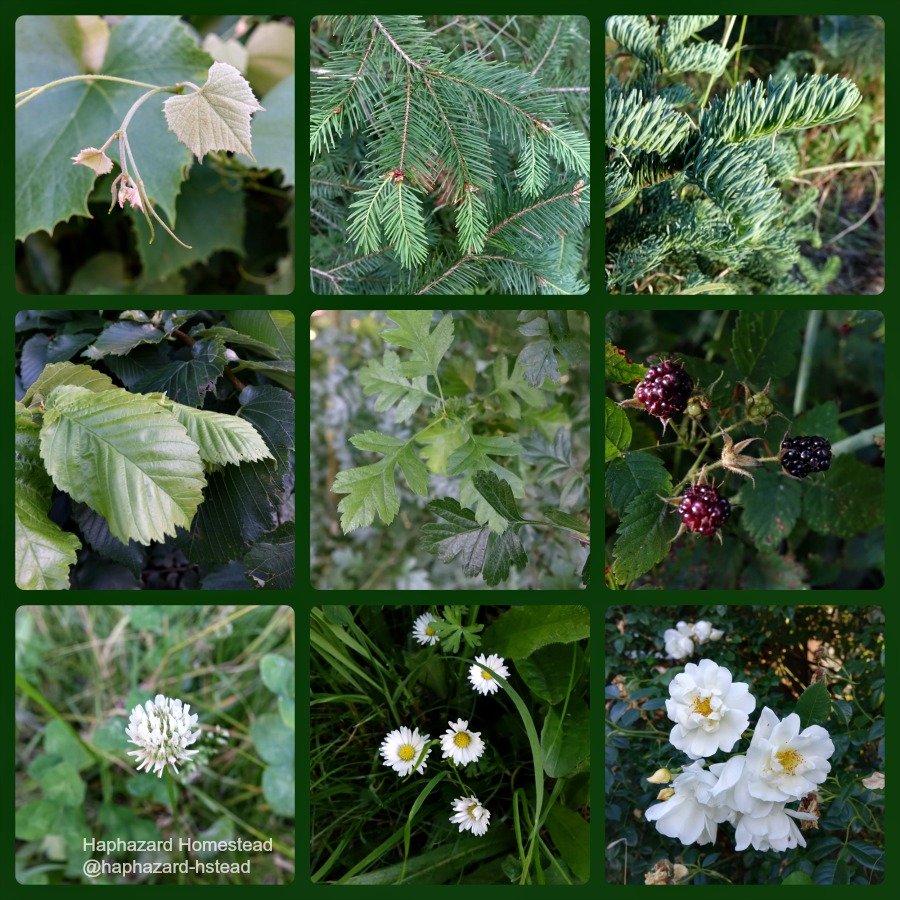
This time of year, being able to identify plants at all stages of their growth is really helpful, because I am looking for the youngest, most tender plants I can find. The leaves I pick from the American Elm and Hawthorne trees are the tender young growth from the ends of actively growing branches. You can see the difference in their color and texture from neighboring leaves in the images. The secret to getting the giant, older dandelions to taste good enough for a salad, is to strip the center rib out. The Trailing Blackberry is tiny, but it's tasty. It's the only blackberry that is native to the U.S. Pacific Northwest.
Step 2. Bring the harvest back to the kitchen
Back in the kitchen, I lay all my plants out to double-check that I don't have anything that is not edible. And I cull any poor quality plants. The numbers in the images go along with the plant list. So you can use these pictures as a quiz. You can also try to match the plants in my kitchen with the ones outdoors in the previous section. Can you recognize any of them? Are any of your favorite wild plants here?
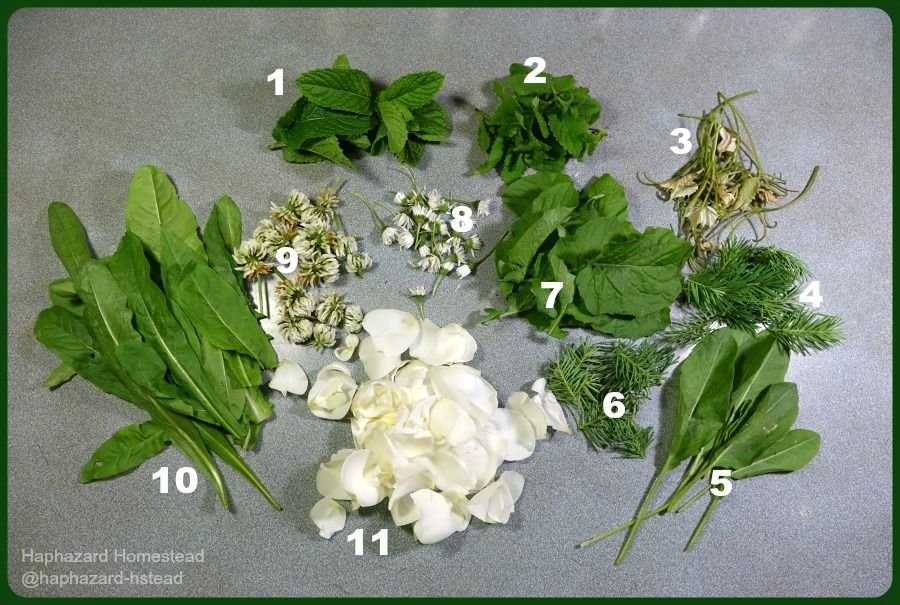

Step 3. Make the Salad
Once I review all my plants, I put all the vegetation in a big pan to rinse them well. Then I drain the plants and chop them finely. I don't just chop them once, but a few times over. Chopping up all the greenery is not in fashion at fancy restaurants, but this is what makes a wild salad so tasty. By chopping them so finely, all the flavors mix together. You can see that my big pile of greens ends up a lot smaller in the final pile.
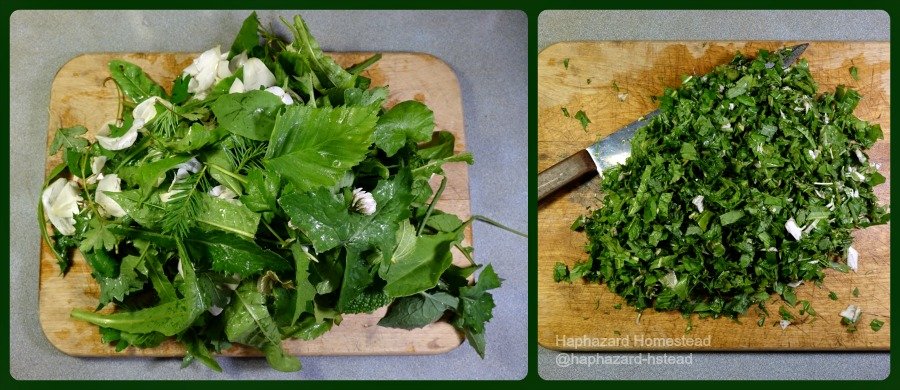
Step 4. Get the Salad Toppings Together
These wild weed salads are incredibly filling. But to make them a complete meal, I need to include some protein. I still have plenty of homegrown English walnuts. And my favorite vegan cheese is this Chao Coconut Herb cheese with black pepper, made by Field Roast. It's incredibly good! It's one of my favorite cheeses, whether dairy or vegan!
Earlier this spring I made some Redbud flower vinegar, by putting flowers from my Eastern Redbud tree into apple cider vinegar and letting it steep for a few weeks. All the color from the flowers moves into the vinegar and it's like a raspberry vinegar. I mix the olive oil, redbud vinegar, and blackberries into a vinaigrette.
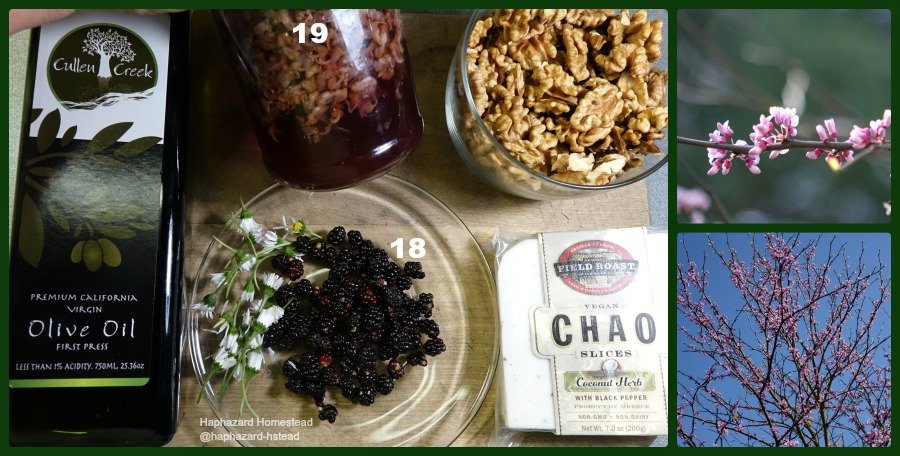
Step 5. Enjoy a Great-Tasting Healthy Salad!
It's easy to make this salad. Fill a big bowl with all those greens. Add some broken walnuts, small pieces of the vegan cheese, and the blackberry-redbud vinaigrette. Toss that salad, put it in a bowl. Top with the English Daisies, blackberries, more vegan cheese, and walnuts. Finish off with a few crackers.
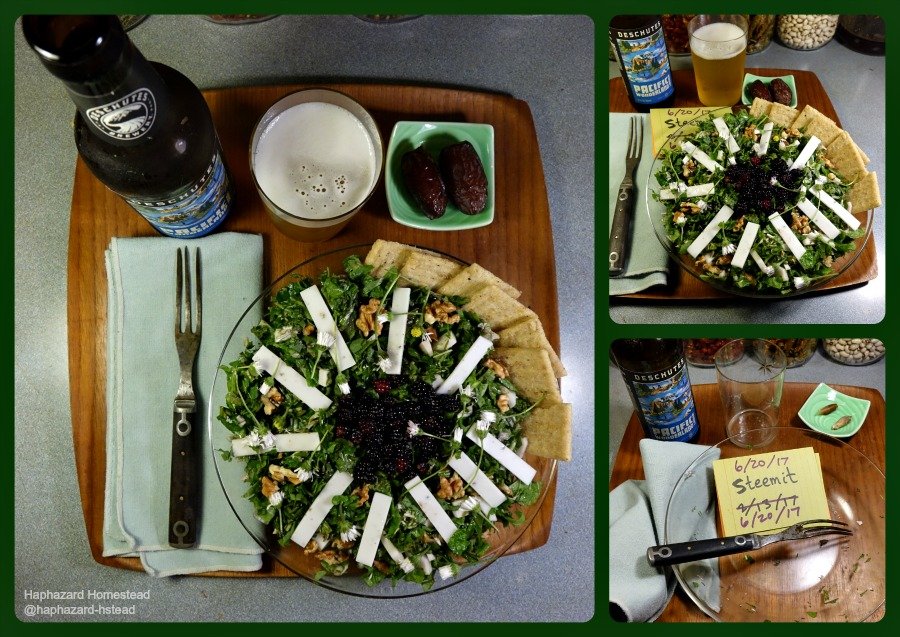
Plant List
This list goes along with the numbers on the plants arranged in my kitchen, in section 2. Can you match up these plants with the ones in the collages in section 1?
- Spearmint - Mentha spicata - it lasts from spring until deep winter
- Lemon balm – Melissa officinalis - it lasts from spring through fall
- Concord Grape - Vitis labrusca - young leaves and tender tendrils
- Douglas-fir - Pseudotsuga menziesii - young spring growth
- Yellow Dock - Rumex crispus - young leaves, anytime
- Noble fir - Abies procera - young spring growth
- Nipplewort - Lapsana communis - leaves, fall through early summer
- English daisy – Bellis perennis – leaves, fall through early summer
- White clover - Trifolium repens - flowers, late spring and summer
- Rose "White Dawn" - Rose spp. - flower petals, late spring and summer
- Bristly Hawksbeard - Crepis setosa - young leaves, late spring through early summer
- American Elm -Ulmus americana - young leaves, spring to early summer
- Common Sowthistle - Sonchus oleraceus - young leaves, spring through early summer
- Prickly wild lettuce - Lactuca serriola - young leaves, early spring through early summer
- Hawthorn tree - Crataegus spp. - young leaves, spring to early summer
- Prickly sowthistle - Sonchus asper - young leaves, spring through early summer
- Dandelion greens and flowers – Taraxacum officinale – tender leaves, anytime
- Trailing blackberry - Rubus ursinus - when ripe, early summer
- Eastern Redbud - Cercis canadensis - flowers, spring
What Do You Think?
Being able to eat wild plants, especially weeds, is the epitome of sustainability. The plants in this salad took absolutely zero effort from anyone, except for using them. They take care of themselves. Many of them are invasive weeds, so we can pick all that we want. That's incredible and sustainable. I truly hope that every one of you can find wild plants around you, especially weeds, that are good to eat. This is real food for regular people. It's incredibly good food.
- Are you enjoying eating any wild plants this spring and summer?
- Would you eat my wild salad?
- Are there any specific plants from this salad, or others that I've posted about, that you want to know more about?
Here are more wild salads that I've posted on Steemit. They use different wild plants, but they are all delicious! - Wild Hotel Salad 1 // Wild Hotel Salad 2 // Wild Weed Salad // Homestead Extravaganza Salad with Shaggy Parasol Mushrooms // Paleo Weed Salad // Not Quite Paleo Weed Salad // Winter Weed Salad // 15 Minute Weed Salads //
I write about foraging because I believe that we can all have lives that are richer, more secure, more grounded, and more interesting by getting to know the plants and the land around us – in our yards, our parks, and our wilderness.
I would like Steemit to be the premier site for Foraging on the Internet! If you have any thoughts about foraging, or experiences to share, write a post and be sure to use the Foraging tag. And check out the @foraging-trail to see curated quality posts about foraging. Happy Foraging!
